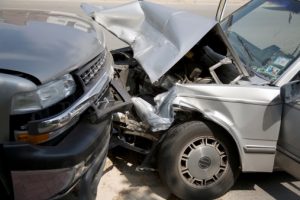Where Head On Collisions are Most Likely to Occur in Buffalo
 A Buffalo woman attempting to pass a car on Route 97 recently collided head-on with another vehicle. The woman was trying to pass another vehicle and was traveling eastbound in the opposing traffic lane. She collided with another car, killing the other driver instantly. She was also killed in the accident. According to Buffalo News, the collision is under investigation and law enforcement officers are awaiting toxicology reports to make a determination on whether alcohol use was involved in the head-on accident or not.
A Buffalo woman attempting to pass a car on Route 97 recently collided head-on with another vehicle. The woman was trying to pass another vehicle and was traveling eastbound in the opposing traffic lane. She collided with another car, killing the other driver instantly. She was also killed in the accident. According to Buffalo News, the collision is under investigation and law enforcement officers are awaiting toxicology reports to make a determination on whether alcohol use was involved in the head-on accident or not.
Head-on crashes make up a disproportionately high share of fatal car accidents, and of collisions resulting in serious injury. Statewide in New York, 966 fatal collisions and another 118,465 non-fatal injury crashes occurred over 2014, according to the NY Department of Motor Vehicles. Improper passing, which often results in head-on crashes, was the cause of a total of 13,589 statewide collisions. Drivers going the wrong way onto a highway, and drivers losing control while traveling around a curve are also very common causes of head-on crashes.
Motorists must be aware of the dangers of head-on collisions and must be proactive in attempting to prevent them from occurring. One key part of effective prevention decisions is knowing where head-on collisions are most likely to occur.
Where Head-On Collisions are Most Likely to Occur
Head-on collisions frequently occur on two lane roads, which have no middle median or physical barrier. Safety Transportation says ¾ of all head-on accidents in the United States occur on these types of roads. One possible option for lawmakers to improve safety on these type of roadways is to add a cable barrier or some other type of physical barrier.
Cable barriers are often recommended over concrete medians because the cable barrier has more give if a driver hits it, so motorists who strike the median are less likely to be badly injured or killed. The use of rumble strips could also be an effective way to alert drivers they have crossed over from their lane and into the lane of opposing traffic, which they are in danger of hitting head-on.
Drivers who travel on two lane undivided roads can also make sure they follow the speed limit- especially around curves where 23-percent of head-on accidents happen. They can also avoid distractions, intoxication, and drowsy driving, which are all contributing factors to causing head-on crashes as drivers veer off into opposing lanes.
Head-on collisions also frequently occur on highways, as well as on the entrance ramps and exit ramps people use in order to access highways. When drivers get onto highways going in the wrong direction, they are very likely to strike other vehicles moving at high-speeds, thus causing fatal head-on collisions. The use of more effective “No Enter” signs, placed slightly lower, could help to reduce these types of crashes according to NBC. Drivers also need to be careful attention to pavement markings and avoid intoxicated driving which could cause disorientation and result in wrong-way head-on accidents.




